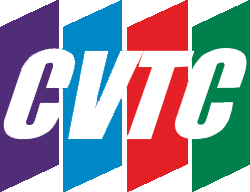Restrictions due to Covid-19 may be loosening in the province, but there is still the looming worry and outright fear of new outbreaks or simply the fact that people are still getting sick, just at a level that is more manageable for healthcare professionals. This has led many businesses to reopen with strict rules for the number of, and health of, the occupants as well as a continued investment into online infrastructure for shopping, delivery, and curbside pick up.
Schools are not immune to this and looking ahead to the fall, it seems more likely that universities and colleges will be offering more distance learning to facilitate proper physical distancing. But online classes have a bad reputation for some and has left a bad taste in the mouth of many.
When we think of online learning, we often think of simply scrolling through websites or watching videos. Certainly, those things have their place, but when we at CVTC talk about distance learning, we don’t really mean that at all. Therefore, a new phrase has to be thrown around and for now at least, we are going with connected classrooms. So, what does this mean for the student?
One of our biggest selling points is our instructors. We are proud of the face to face method of delivery we employ, and we know that many of our students appreciate it as well. With Covid-19, and let’s face it, other pandemics in the future, looming, it’s important that we remain flexible and able to deliver the quality of instruction that has come to be expected in a model that is safe. This is where Connected Classrooms come in.
With connected classrooms, there’s no scrolling through websites or watching video after video with no context. Our online classes are more like livestreams where our instructors are delivering the material in real time over Zoom (video and/or phone, depending on your needs). Many of our instructors are happy to receive texts from students while others are practically glued to their email, in one way or another, to answer questions. Classes are still run over the course of the day, though usually with different blocks of instruction and work time because Zoom fatigue is no joke, but you get the comfort of knowing that there’s a real person on the other side of the screen, ready to answer questions, take a look at your work, and be there when you need help. And some instructors even record their lectures to post on places like YouTube after so you can watch them again and again. Others are simply happy to answer all of your questions, just like we would in the classroom.
Having classrooms connected both physically and virtually gives you the potential best of both worlds. If you’re not feeling well, you can simply ‘tune in’ to class so that you don’t miss anything (Zoom, which is the app we use, allows you to use a computer, smartphone, or even just dial in and listen to the audio), or if you live far out of town, you can still get your training. Then when you feel better, you’ll be welcomed back in the classroom and you won’t have to worry that you missed too much. We are also hopeful that this will allow more rural students who would have a difficult time coming into class to come into Zoom instead and get their training.
We’d like to welcome you to CVTC 2.0 (er, 3.0? Maybe we’re up to 4.0 by now!) We are really excited to start delivering more material to more remote communities, to people who can’t get into our classrooms for whatever reasons and even let people who would normally come into class but cannot due to illness, quarantine or other reasons still be able to attend their lecture. And don’t worry: the classroom and the face to face instruction is still at the heart of what we do – we’ve just branched out a little so that you can see us in person, on the screen, or over the phone – whatever works best for you. We are hoping to have more infrastructure and more ability to deliver in this way in the coming months so that if the Second wave hits, we’re ready.
The Connected Classroom! It’s distance learning in real time, with instructors who care about helping you succeed in your employment goals.
–Charlene Mattson, CVTC Prince George


